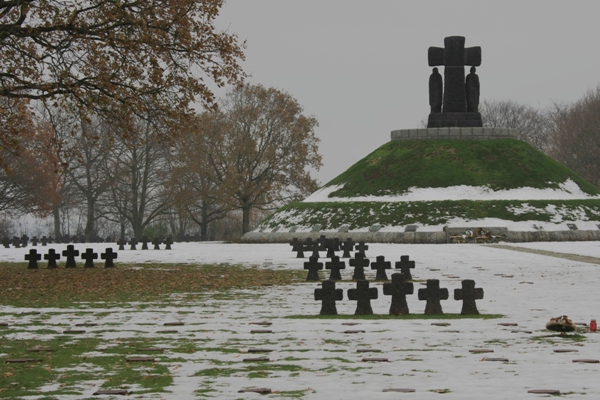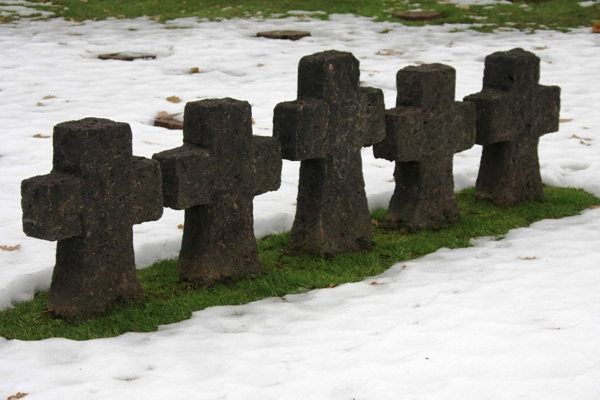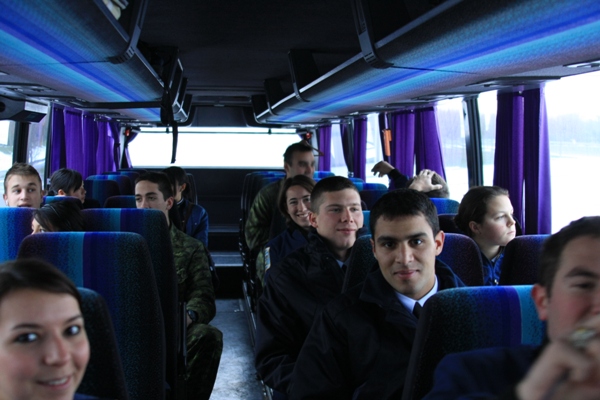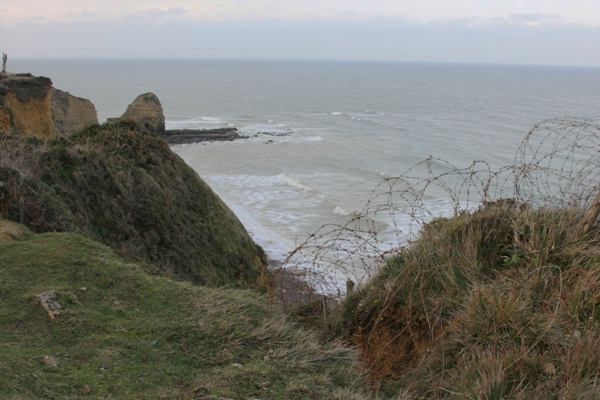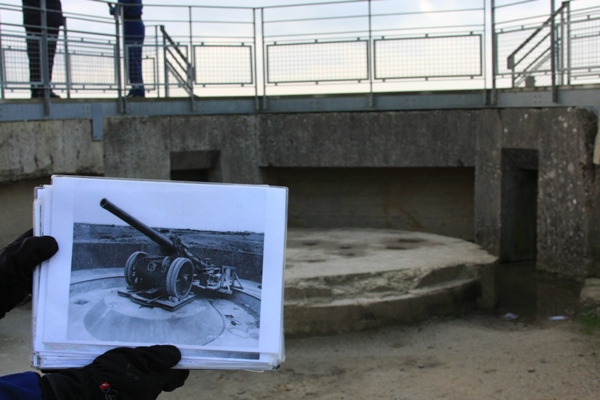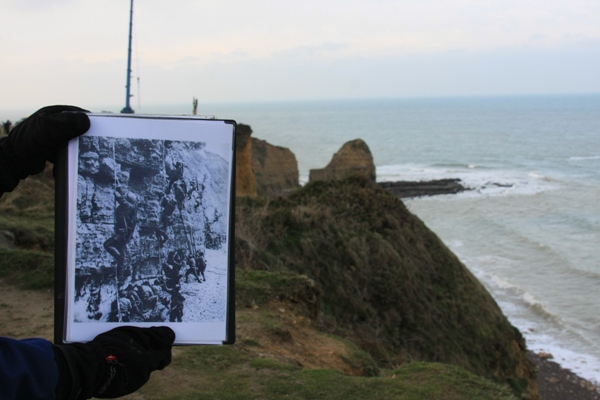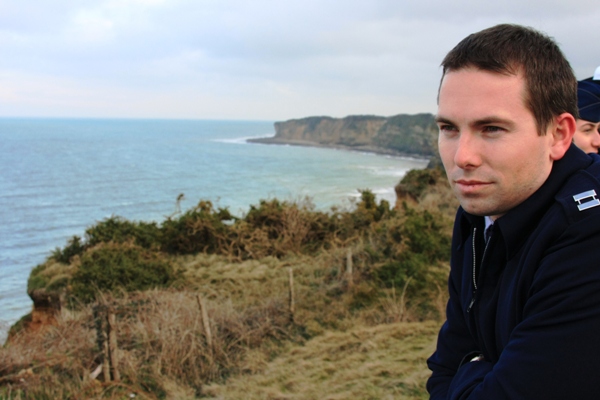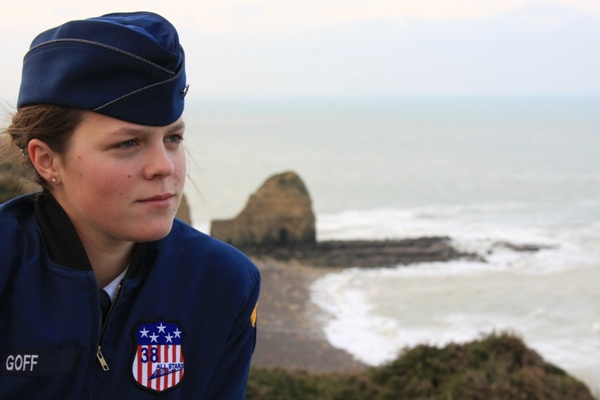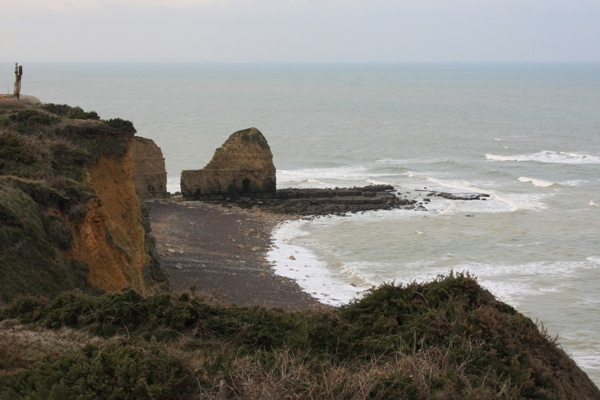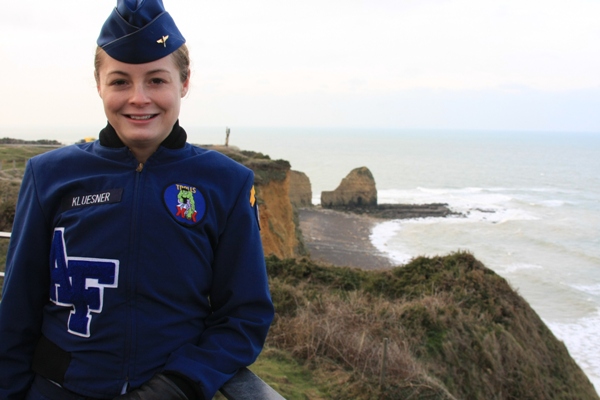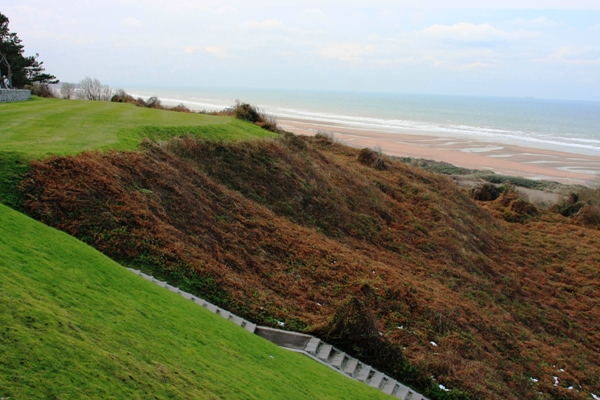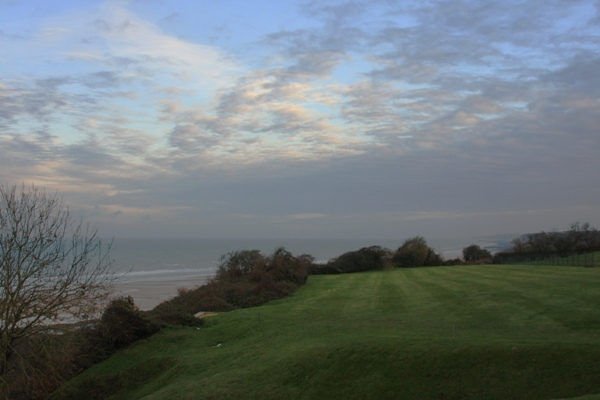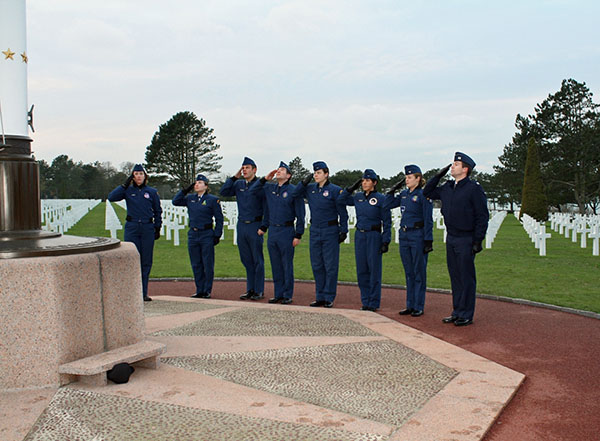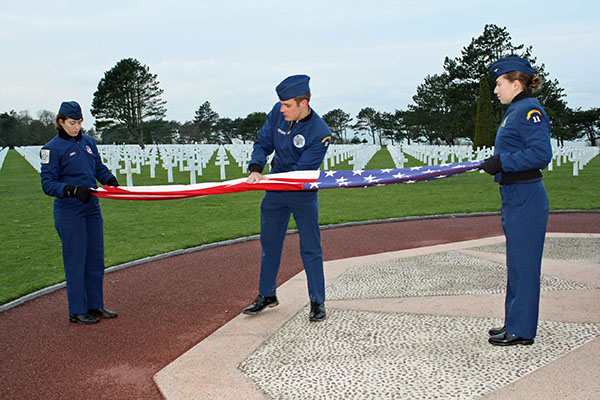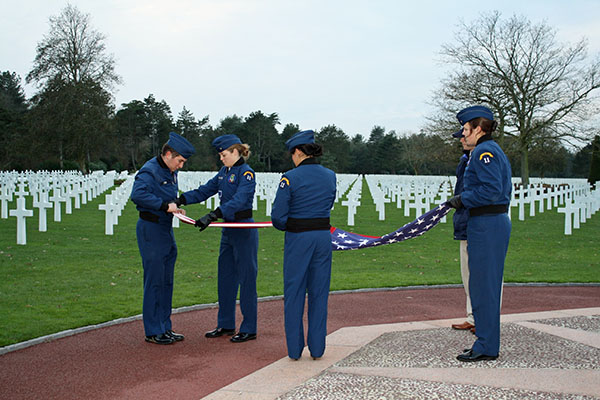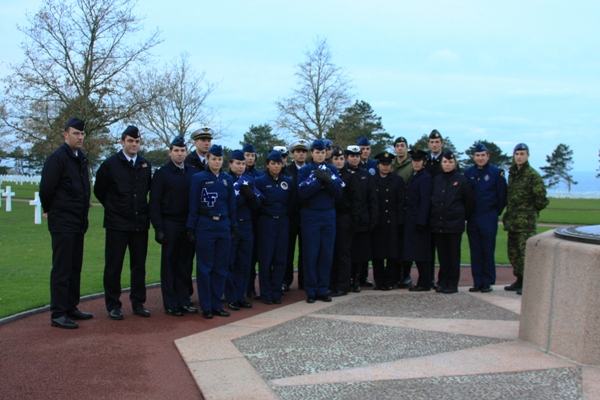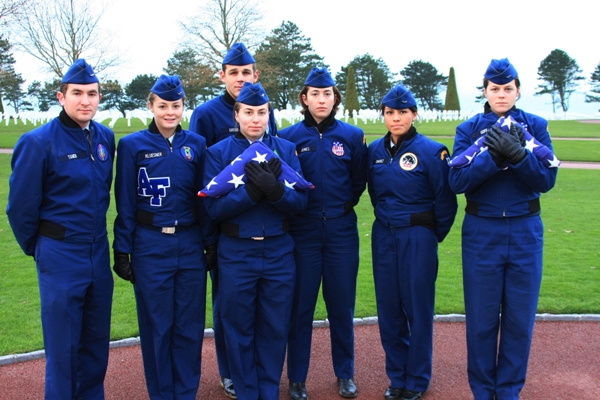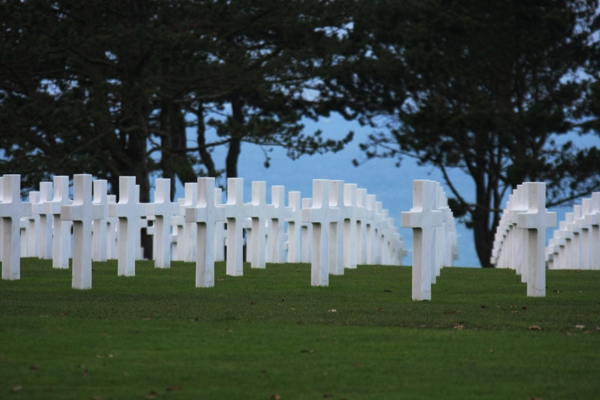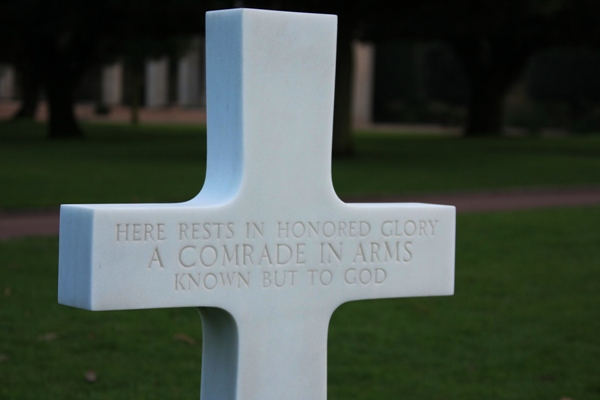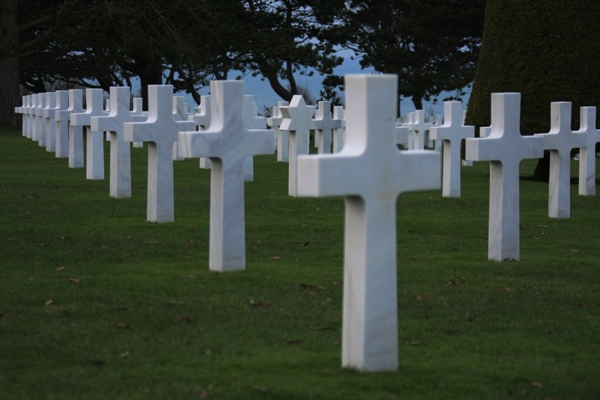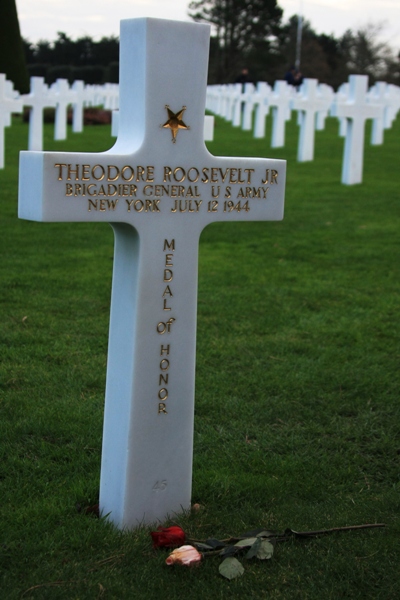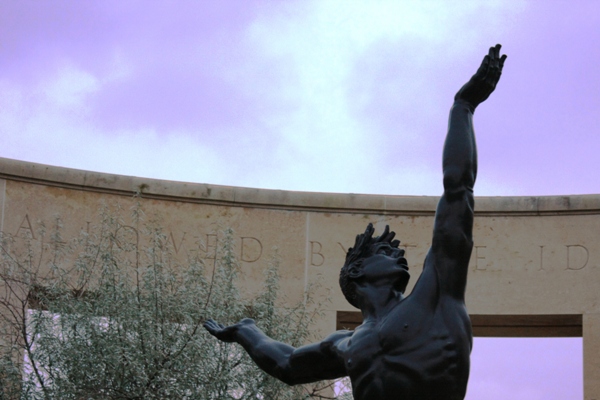We began our tour of Normandy appropriately, somberly. After a visit to the museum in Caen, we hopped on the bus and went out to see the locations in person.
This is the La Cambe German military cemetery. It was a sobering place to begin. There are over 21,000 men and boys buried here.
These crosses are center pieces and not grave markers.
The rose is a fitting metaphor.
Here you can see the expanse of the site, with the sea in the background. Each of the simple, small plaques represent 2 people buried in the same grave site.
An interesting fact about the German Cemetery is that it’s entirely funded by donations. Unlike the US Cemeteries (and UK/Canadian, I believe), which are publicly funded. Although there was no one at the site when we visited, our guide informed us that there are regularly students taking care of the grounds. Talk about a poignant community service.
Here’s the bus we spent MANY hours on. It was great to have a bus just for us, but at the same time, we spent a lot of time inside it. Plus, when the heater went out for a day and a half, it got a bit chilly!
This is sea and cliffs of Pont du Hoc. It was the site of one of the most difficult missions on D-Day (although they are all pretty unimaginable). There were around 220 US Army Rangers who were given the task of scaling the cliffs and knocking out the guns on the top. This was to secure the other landing beaches, since this point was right in the center.
This was the site of one of the guns the Rangers were trying to take out. However, apparently two days before the assault, the German forces moved the guns back into the woods.
This is an image from the operation. They used firefighting equipment to scale the vertical cliffs.
Although I have experienced some pretty horrific things, I can’t truly imagine how either side felt.
Maggie was looking out at the vast scene as well.
This is another image of the cliffs. Normally, there is a large stone dagger to commemorate the sacrifices made by the Rangers. Out of the 220 who began, only 90 were left in fighting shape after taking the cliff, destroying the guns that had been pulled back and defending repeated counterattacks. It truly is an amazing story of courage and sacrifice.
Kaeli with the cliffs in the background.
Margo and Maggie standing in a crater left from the attack. Although the other locations were repaired, the ground around Pointe du Hoc was intentionally left untouched. It left a very physical reminder of the horror of war.
Moving down the beach, we came to the well manicured lawn of the American Military Cemetery.
The beach directly below the cemetery is Omaha Beach, where 3,000 people were killed or wounded.
Our guide giving the group background information on of the grave sites.
We were fortunate to be able to take part in the cemetery’s evening retreat. The cadets were asked to lower and fold the flag.
Laura, Scott and Margo folding the first of two flags.
Dustin, Kaeli, Nancy and Maggie folding the second flag.
Rendering honor to the flag and all those who fought for what it represents.
This is the whole group.
The USAFA cadets with the flags after the ceremony.
A long row of American grave stones. The grounds cover 172.5 acres (~70 hectares).
One of the 307 unknown soldiers buried here.
There are 9,387 men and women interred here.
General Roosevelt (son of President Theodore Roosevelt) died shortly after the battle from a heart attack, but was buried here with his men. He successfully petitioned his uncle, President Franklin D. Roosevelt, to be in the first waves ashore. He is also one of three Congressional Medal of Honor recipients buried here.
This statue is entitled, “The Spirit of American Youth Rising from the Waves.” Behind the statue, the semi-circular post and lintel with the inscription: “THIS EMBATTLED SHORE, PORTAL OF FREEDOM,
IS FOREVER HALLOWED BY THE IDEALS, THE VALOR AND THE SACRIFICES OF OUR FELLOW COUNTRYMEN.”
The first time I visited this cemetery, I had just graduated from the Academy and was in a very similar place as the cadets I was accompanying. It was a completely different experience to come back a decade later with several trips to the wars of our generation. Although both were poignant … I feel like I connected more with my comrades in arms on this visit. I hope future generations are able to avoid the horrors of war. These monuments are silent sentinels to guard against that repetition.
It was a fitting end to our time in Normandy.
Up next, I was honored to be selected for promotion to Major.
Until then…
–Jim

